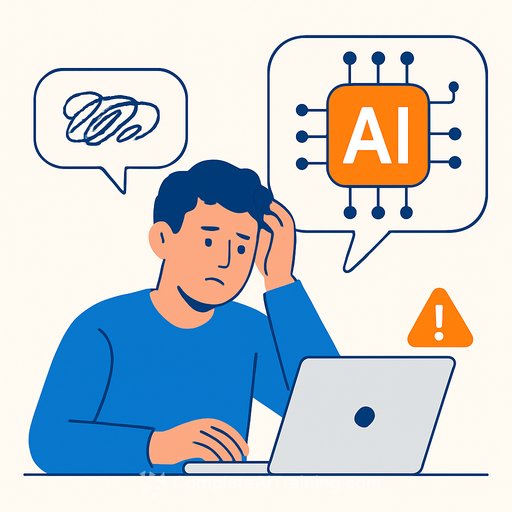AI Moves From Tool to Creative Partner in Chinese Online Literature
Writers gathered in Hangzhou for the 2025 China International Online Literature Week with a clear focus: use AI to write faster, translate at scale, and spin stories into audio, comics, and screen projects-without losing the human voice.
Chinese online literature now draws about 200 million active overseas readers across 200+ countries and regions. AI is accelerating reach while opening new workflows for authors and studios.
What Writers Are Actually Doing With AI
- Translation at speed: AI-powered translation is pushing Chinese web fiction into global markets and helping platforms serve personalized picks to readers.
- Human judgment stays in charge: "AI is not the enemy but a helpful friend, like a secretary… I still pick, prune and phrase every line," said UAE writer Ahmed Elsaid.
- Draft repair and logic checks: Chinese author Liu Cuihu uses AI to edit drafts, spot plot holes, and answer factual questions fast. Clear instructions improve results.
- Voice and dialect polishing: Writers are using AI to adapt dialogue for region-specific accents and context, then refining with their own ear.
- Human feeling matters: "AI makes writing easier and faster… But literature is about humans' real feelings that cannot be programmed," noted Turkish journalist Kamil Erdogdu.
From Text to Audio, Comics, and Screens
Zhang Hongsen of the China Writers Association highlighted the "new trio": online literature, games, and web series-where stories seed adaptations and grow together.
Companies are already building the pipeline. Yuewen Group offers AI audiobooks and AI-assisted webcomics, plus a beta "AI artist" to visualize scenes while drafting. British author Kawin Jack Sherwin says generating character images helps him describe finer details and pitch adaptations more efficiently.
Beijing Kinging Technology combines AI with professional teams to produce popular AI-plus webcomic series. Meanwhile, the British Library has showcased online Chinese novels, signaling mainstream cultural interest. See the institution's work here: British Library.
Translation at Scale-With Caveats
On major platforms, more than half of translated works are now AI-assisted, slashing costs by over 90 percent. In the first half of 2025, WebNovel rolled out 3,400 AI-translated books; total AI-translated titles surpassed 7,200, over 70 percent of Chinese-to-overseas translations on the platform.
Limits remain. Reports note AI can miss cultural nuance, mishandle jargon, and lose track of names or plot threads over chapters due to memory limits. Human editors, glossaries, and style guides are still essential.
Global Demand Is Real
Chireads, a mainly French-language platform, hosts around 100 titles (80 percent Chinese web fiction) and draws over 300,000 monthly visits from France, Belgium, Switzerland, Canada, and beyond. Co-founder Charles Emmanuel Dewees cites the distinct narratives and meaning-rich stories as key drivers-and plans more language versions with volunteers and AI.
What This Means for Your Writing Practice
- Co-write with guardrails: Let AI ideate and draft. You decide voice, theme, and final phrasing. Keep a style sheet to stay consistent.
- Debug plots with prompts: Ask AI to scan for logic gaps, foreshadowing opportunities, timeline conflicts, and character consistency.
- Localize the voice: Use AI to simulate regional speech patterns, idioms, and customs-then verify with native sources or sensitivity readers.
- Beat AI's memory limits: Maintain a living glossary for names, terms, spells/skills, locations, and continuity notes. Paste relevant context with each request.
- Prepare for adaptations early: Generate character sheets, location boards, and mood panels with AI image tools to brief artists, producers, and co-writers.
- Set a translation workflow: AI draft → human post-edit → QA checklist for terminology, tone, and cultural nuance.
Quick Start Checklist
- Define your brief: genre, theme, audience, pacing, tone, word count.
- Create reusable prompt templates for outlines, scenes, and dialogue beats.
- Build a character bible: backstory, motives, speech habits, relationships, arcs.
- Keep a continuity pack: plot timeline, world rules, magic/tech constraints, recurring jokes.
- Compile a reference glossary for names and terms; update it every draft.
- Draft pitch assets: a 5-panel comic teaser and a 60-90 second AI-narrated sample.
- Close the loop with data: track reader feedback and engagement to refine future releases.
Why This Moment Matters
AI won't replace a writer's lived experience or emotional insight. It will remove bottlenecks-translation, consistency checks, draft polish-and give you more shots on goal across formats.
If you want structured practice and tools to level up your AI workflow for writing, see curated options here: AI Courses by Job.
Bottom line for writers: use AI to work wider and faster; keep your voice, values, and editorial judgment as the final layer.
Your membership also unlocks:






